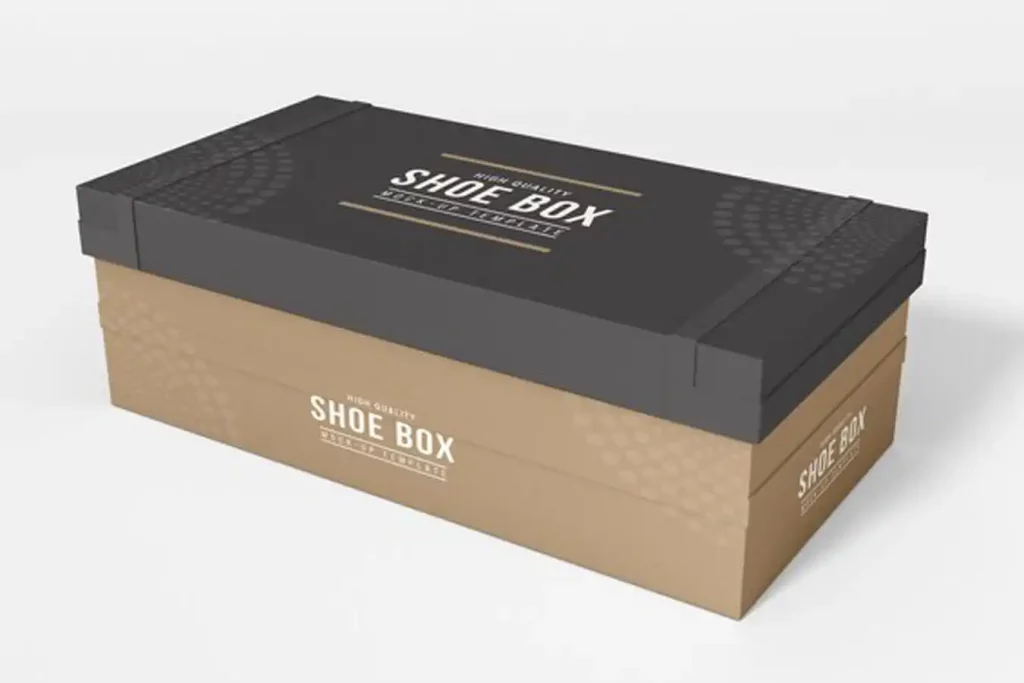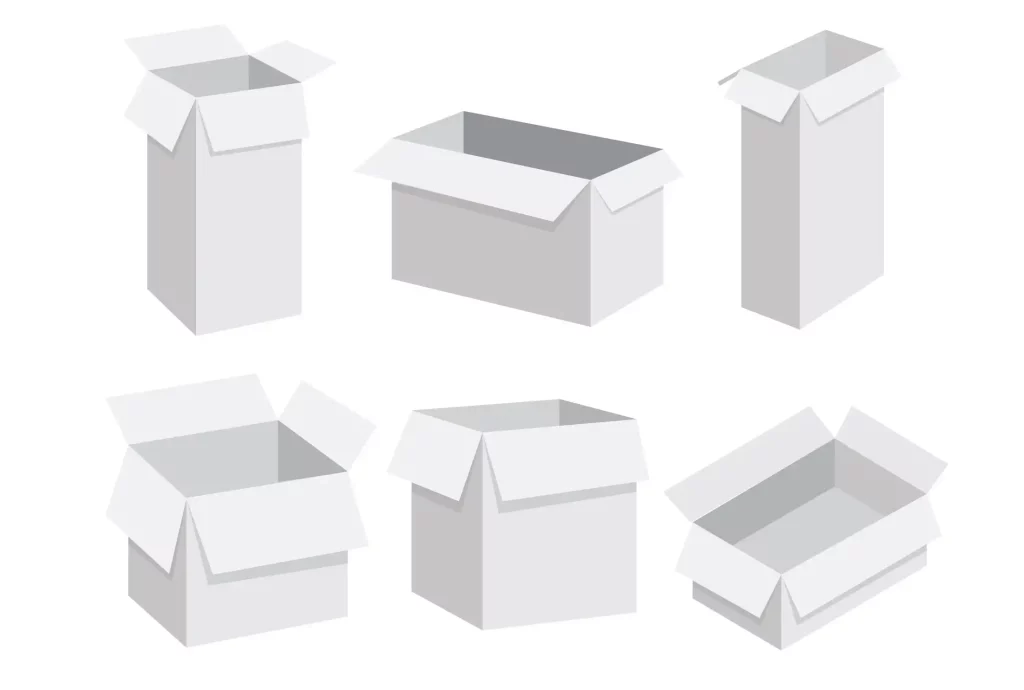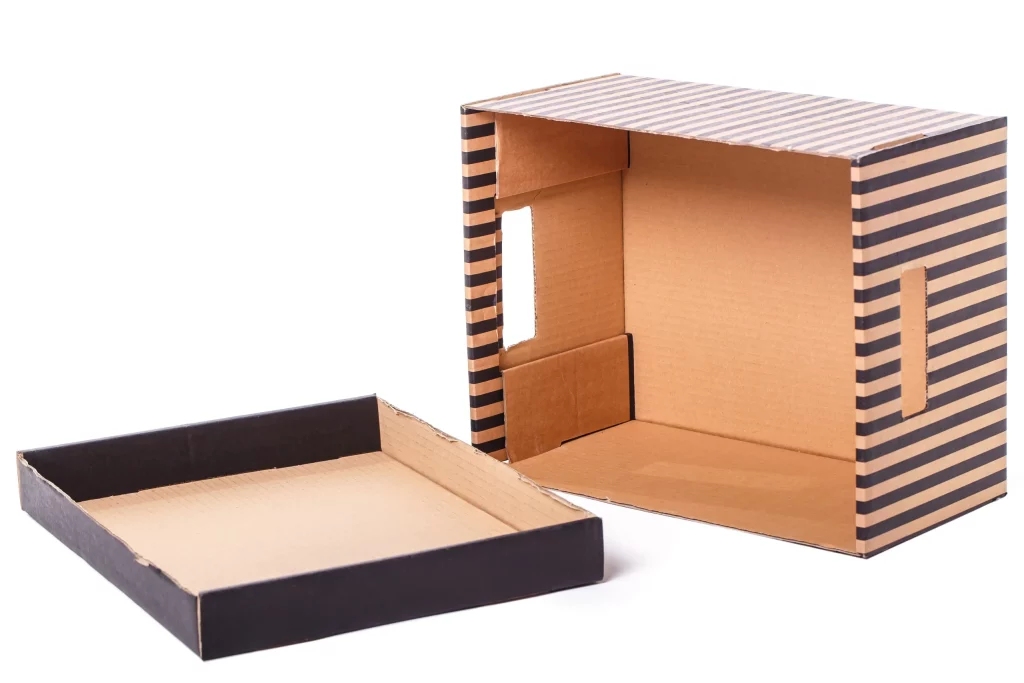“How much does a shoe box weight?” Ever thought about it? You’ve landed in the right spot if you have!
It might seem like a trivial thing to consider, but when it comes to shipping, storage, or even craft projects, the weight of a shoe box can suddenly become very important.
Never really stopped to think about the weight of that empty shoe box, huh? Maybe it’s high time you did.
It sounds minor, but think about shipping, storage, or crafting. Suddenly, that shoe box’s weight is front and center!
So, are you ready to dive into the nitty-gritty of what makes up that shoe box weight? Let’s go!
Importance of Shoe Boxes
Shoe boxes. We’ve all got a few tucked away somewhere, housing everything from our precious kicks to old letters, photographs, or that collection of rocks we picked up on various travels. They’re handy, aren’t they?
But their usefulness extends beyond mere storage. Shoe boxes are crucial in the retail industry, especially for online retailers.

A shoe box not only protects the merchandise during shipping, but it also adds an extra level of customer experience when unwrapping a new pair of shoes.
Knowing the weight of a shoe box helps retailers accurately calculate shipping costs, reducing waste and saving money.
Understanding Shoe Box Weight
Now that we’ve realized that shoe boxes are more than just cardboard constructs, let’s dive deeper and figure out how much one actually weighs.
Anatomy of a Shoe Box
Let’s dissect a shoe box for a moment. It’s essentially a rectangular prism, typically made from cardboard or sometimes, more durable materials for high-end footwear. The type of material used greatly impacts the weight of the box.
A standard cardboard shoe box, sans the shoes, can weigh anywhere between 250 and 400 grams (about 0.55 to 0.88 pounds). Now, that’s lighter than a loaf of bread!
Keep in mind, these values can vary based on the thickness of the cardboard, the size of the box, and any extra elements like magnetic closures or handle cutouts.

Purpose of Shoe Boxes
But why does all this matter? Apart from the aforementioned shipping considerations, knowing the weight of a shoe box could be vital for numerous purposes. Planning a school project that requires you to build a castle out of shoe boxes?
You’ll need to know how much support you need to prevent a cardboard catastrophe. Or maybe you’re using shoe boxes as storage units in a DIY bookshelf – too much weight, and you could have a leaning tower of shoe boxes!
Why Shoe Box Weight Matters
We’ve already touched on how shoe box weight matters to online retailers, school projects, and DIY storage units. But that’s just the tip of the iceberg! In a broader sense, understanding the weight of shoe boxes contributes to sustainable practices.
When we know how much a shoe box weighs, we can be more accurate in our waste management. With this knowledge, recycling facilities can estimate how much cardboard waste to expect and can plan their recycling processes accordingly.
Additionally, many creatives use shoe boxes in their art and craft projects. For them, the weight of a shoe box can influence the choice of adhesive, the stability of their creations, and the overall cost of their project.
Factors Affecting Shoe Box Weight
To get an accurate understanding of shoe box weight, we need to consider a few key factors.
Shoe Size and Type
It’s quite obvious, but a shoe box for children’s shoes is going to be much lighter than a shoe box for adult boots, purely because of the difference in size.
Additionally, boxes for specialized footwear like hiking boots or sports cleats might have extra padding or reinforcements to protect the shoes, adding to the weight of the box.
Material Choices
The type of material used to make the box significantly affects its weight. Most shoe boxes are made from cardboard, but the thickness and quality of the cardboard can vary. For example, luxury brands might use thicker, heavier cardboard to give a more premium feel.
On the other hand, eco-conscious brands might opt for lighter, thinner cardboard to minimize environmental impact.
Additional Packaging Elements
The final factor to consider is the additional packaging elements. Does the box have a handle? Is there a printed logo or pattern on it? Does it contain silica gel packets, tissue paper, or foam inserts to maintain shoe shape? All these elements add to the overall weight of the shoe box.
Weight Ranges for Different Shoe Box Sizes
When you think about it, the humble shoe box is a marvel of packaging engineering. Different sizes cater to diverse shoe types, and as you can expect, the weight varies accordingly.

Small Shoe Boxes
Small shoe boxes, often used for children’s shoes or small adult sizes, usually weigh between 150 and 250 grams. These boxes are compact, lightweight, and easy to handle, which makes them perfect for their smaller contents.
Medium Shoe Boxes
The most common type is the medium shoe box, typically used for standard adult shoes. The weight of these boxes usually ranges from 250 to 400 grams. They strike a balance between sturdiness and weight, ensuring the shoes are protected without making the box too heavy.
Large Shoe Boxes
Large shoe boxes are used for bigger shoe sizes or specialty footwear like boots. Their weight can go up to 500 grams or more, depending on the reinforcements and additional protective measures used inside the box.
Industry Insights: Weight Optimization Strategies
With the rise of e-commerce and increased environmental consciousness, there’s a greater need for weight optimization in shoe boxes.
Manufacturing Techniques
Many shoe manufacturers are adopting innovative techniques to reduce the weight of their shoe boxes. This could include using lighter, stronger cardboard or minimizing the use of additional packaging materials.
Some brands even use clever box designs to maintain strength and protect the shoes without needing extra material.
Shipping and Logistics Considerations
Shipping costs often depend on the weight of the package, so lighter shoe boxes can lead to significant savings for online retailers. Plus, lighter boxes are easier to handle and transport, reducing the risk of workplace injuries among logistics staff.
Consumer Perspectives and Preferences
In the end, the consumer’s opinion is what matters most.
Perception of Shoe Box Weight
Many consumers associate the weight of a shoe box with quality. Heavier boxes can feel more premium and substantial, leading to a more positive unboxing experience. On the other hand, some consumers prefer lighter boxes due to the perceived environmental benefits.
Retailer and Brand Practices
Many retailers and brands are listening to their customers and making changes accordingly. Some are offering ‘no box’ options for online orders, while others are switching to lighter, eco-friendly boxes.
In this way, the weight of the shoe box is becoming an important part of the customer’s shopping experience.
Case Study: Iconic Shoe Brands
A great way to understand shoe box weight is to look at some iconic shoe brands and their packaging decisions.
Nike’s Shoe Box Evolution
Nike, one of the largest athletic footwear brands worldwide, has been on a constant quest to optimize their shoe box design.
They have shifted from heavier, thicker cardboard to lighter, recycled cardboard that reduces both weight and environmental impact.
Their innovative approach has led to a 10% reduction in average shoe box weight while maintaining their iconic design.
Adidas: Balancing Weight and Aesthetics
Adidas has also made a noticeable effort in reducing their shoe box weight. However, their challenge lies in balancing weight reduction with aesthetics. Adidas boxes, recognized for their classic blue and white design, have become a part of their brand identity. Their solution?
A mix of lightweight materials and streamlined design that keeps the weight down without compromising on the box’s appearance or durability.
How to Measure Shoe Box Weight?
If you’re curious about how much your shoe box weighs, you can easily measure it at home. First, you’ll need a digital scale with a good range and precision. Place your empty shoe box on the scale and record the weight.
Keep in mind, this doesn’t account for any packaging material that might come with the shoes.
To measure the total shipping weight, put everything back into the box, just as you received it, and measure again.
Common Materials Used for Shoe Boxes
The materials used to construct a shoe box have a direct impact on its weight. The most commonly used materials include:
- Cardboard: This is the most widely used material for shoe boxes due to its balance of weight, strength, and cost-effectiveness. It can be easily printed on, making it perfect for brands that want to create visually appealing boxes.
- Corrugated Fiberboard: This is a more durable and somewhat heavier version of cardboard. It provides excellent protection for shoes, especially during shipping.
- Recycled Materials: Many brands are moving towards using recycled materials for their shoe boxes. These are often lighter in weight and have a lower environmental impact. However, they may not be as strong or visually appealing as traditional materials.
Average Weight of Shoe Boxes
While the weight of shoe boxes can vary significantly depending on the factors discussed earlier, here are some average weights for different shoe sizes.
| Shoe Size | Average Weight of Box |
| Child | 50-100 grams |
| Women’s | 150-200 grams |
| Men’s | 200-300 grams |
Weight Variations
Different factors can influence the weight of a shoe box. Here’s a table that shows some of these factors and the potential weight range they might contribute:
| Factor | Weight Variation |
| Shoe Size and Type | 50-300 grams |
| Material Choices | 10-50 grams |
| Additional Packaging Elements | 10-150 grams |
How Much Does a Typical Shoe Box Weigh?
If we consider the most common shoe box – a men’s size for a pair of standard running shoes, here’s how the weights might break down:
| Component | Weight |
| Box Material | 200 grams |
| Additional Packaging (tissue paper, cardboard inserts) | 50 grams |
| Total | 250 grams |
Remember, these are just estimates. The actual weight of a shoe box can vary significantly depending on numerous factors, including the shoe brand, materials used, and additional packaging elements.
Case Studies: Lightweight vs. Heavyweight Shoe Boxes
While most shoe boxes fall within a certain weight range, some brands use exceptionally lightweight or heavyweight materials. Here’s a comparison:
| Shoe Size | Lightweight Shoe Box Weight | Heavyweight Shoe Box Weight |
| 4-5 | 120 grams | 200 grams |
| 6-7 | 130 grams | 230 grams |
| 8-9 | 140 grams | 260 grams |
| 10-11 | 150 grams | 290 grams |
| 12-13 | 160 grams | 320 grams |
Read more: How Much Do Ski Boots Weigh
FAQs About Shoe Box Weight
How much does a box of shoes weigh?
How much do Nike shoes weigh?
What is the average weight of shoes?
How many pounds do shoes add?
How many pounds do sneakers weigh?
How much does a shoe weigh in kg?
How much do shoes weigh in grams?
How much does a sneaker weigh?
Summary: Unveiling the Truth about Shoe Box Weight
At first glance, the weight of a shoe box might seem like a trivial detail. However, as we’ve explored, it’s a complex subject with numerous factors at play – from the type of shoes being packaged to the materials used and even the branding strategies of different companies.
Understanding shoe box weight is important for businesses, particularly in terms of manufacturing, shipping and logistics, and customer perceptions.
As a consumer, it might seem less relevant, but it’s an aspect that subtly contributes to the overall unboxing experience. Whether light as a feather or solid as a rock, the humble shoe box has a weighty story to tell! Happy reading.
Read next: How Much Does a 24 Pack of Water Weigh


